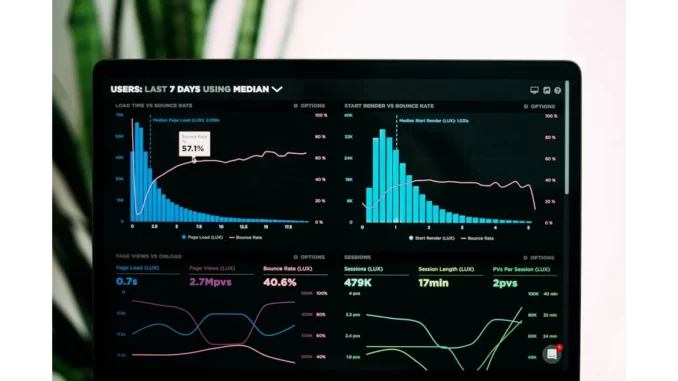
Summary
Enterprises Embrace Multi-Cloud Architectures Amid Data Management Challenges
As organisations pivot towards digital transformation, multi-cloud architectures have emerged as a preferred choice, promising enhanced flexibility and resilience. However, efficiently managing data storage across diverse cloud and on-premises systems remains a formidable challenge. Industry expert Sarah Mitchell provides insights into strategies that balance cost, security, and agility in this complex landscape.
Main Article
Navigating a Multi-Cloud World
In the rapidly shifting domain of digital transformation, enterprises are increasingly opting for multi-cloud architectures to meet their operational needs. These setups allow for greater flexibility, scalability, and resilience, but they also necessitate sophisticated data management strategies. Sarah Mitchell, a seasoned IT consultant, has been instrumental in steering organisations through these transitions.
Reflecting on her experience with a multinational corporation, Mitchell recalls, “We realised that while the flexibility of multiple cloud vendors was advantageous, the cost implications and data management complexities were substantial.” This realisation propelled her to explore more agile and cost-effective strategies, ultimately advocating for the adoption of cloud-tiering functionalities.
The Power of Cloud-Tiering and Data Fabric
Mitchell explains that cloud-tiering is a simple yet impactful strategy. “By keeping critical data secured in private or on-premises environments and moving less frequently accessed data to the public cloud, organisations can optimise storage costs while enhancing data security,” she states. This approach ensures that sensitive information remains protected while reducing unnecessary expenses.
Moreover, Mitchell highlights the significance of a data fabric strategy, which facilitates seamless data movement and management across various environments. “A data fabric allows enterprises to integrate data from disparate sources, providing a unified view that simplifies management and access,” she notes. This integration is particularly advantageous for businesses seeking to maintain agility in their operations.
Security Concerns and the Role of Edge Computing
Despite the benefits, a multi-cloud strategy is not without its challenges. Mitchell underscores security as a primary concern, recommending the implementation of a zero-trust model. “A zero-trust model is essential to ensure only authorised personnel have access to data, mitigating risks associated with breaches and unauthorised access,” she advises.
The conversation also explores the importance of edge computing within multi-cloud architectures. “Edge computing brings data processing closer to the source, reducing latency and enhancing performance,” Mitchell comments. This is especially crucial in environments where real-time data access is vital, such as Internet of Things (IoT) applications.
Automation and Cost Efficiency
Mitchell emphasises the role of automation and vigilant cost monitoring in managing multi-cloud environments. “Automation tools facilitate smart resource allocation, ensuring optimal usage and cost-effectiveness,” she elaborates. These tools not only reduce expenses but also bolster operational efficiency.
Her insights are rooted in practical experiences. She recounts a client who successfully implemented these strategies, reducing cloud storage costs by 30% while improving data access times. “By prioritising primary data on fast-access storage and utilising cloud tiering for redundant data, they achieved significant savings and enhanced performance,” Mitchell shares.
Future Prospects: Storage-as-a-Service Models
Looking ahead, Mitchell expresses optimism about the future of multi-cloud storage management. “We’re witnessing a shift towards more integrated solutions, where storage management becomes more intuitive and less burdensome for IT teams,” she observes. She notes the potential of Storage-as-a-Service models to manage resources flexibly without requiring significant upfront investments.
As our conversation concludes, Mitchell leaves a compelling thought: “The key to successful multi-cloud storage management lies in understanding your data needs and aligning them with the right technologies and strategies. It’s about being proactive, not reactive, in managing your storage landscape.”
Detailed Analysis
The shift towards multi-cloud architectures is emblematic of the broader trend of digital transformation across industries. As companies seek to harness the power of cloud computing, they must also navigate the complexities of data management. The strategies outlined by Sarah Mitchell, such as cloud-tiering and data fabric approaches, offer a roadmap for optimising costs while ensuring security and agility.
Furthermore, the emphasis on automation and edge computing reflects a growing recognition of the need for real-time data access and efficient resource allocation. These elements are crucial in an era where data is a vital asset, and the ability to manage it across diverse platforms is not merely advantageous; it is essential.
Further Development
As multi-cloud architectures continue to evolve, enterprises will likely face new challenges and opportunities. Future developments may include more sophisticated integration technologies and enhanced security protocols, driven by advances in artificial intelligence and machine learning.
Bloomberg will continue to monitor these trends, providing in-depth analysis and coverage of how organisations are navigating the intricacies of multi-cloud environments. Stay tuned for further insights into this dynamic and rapidly transforming sector.

